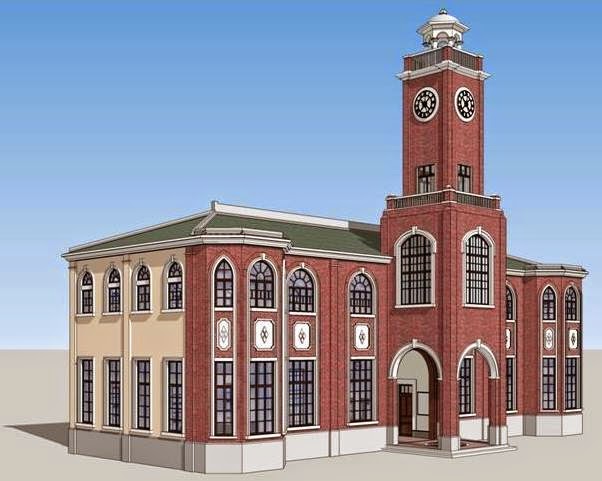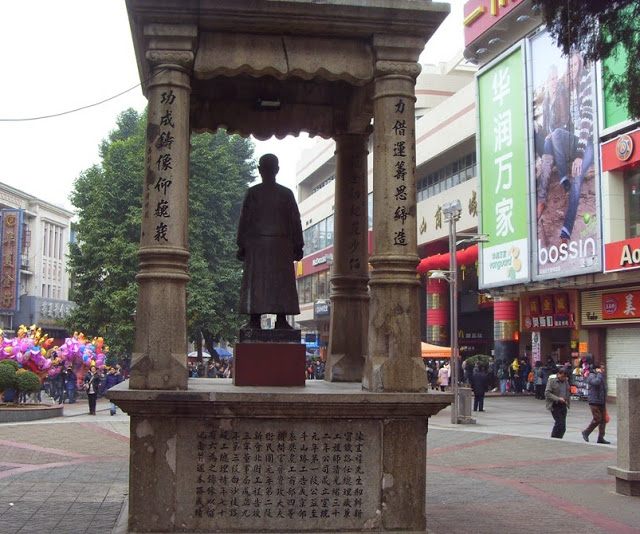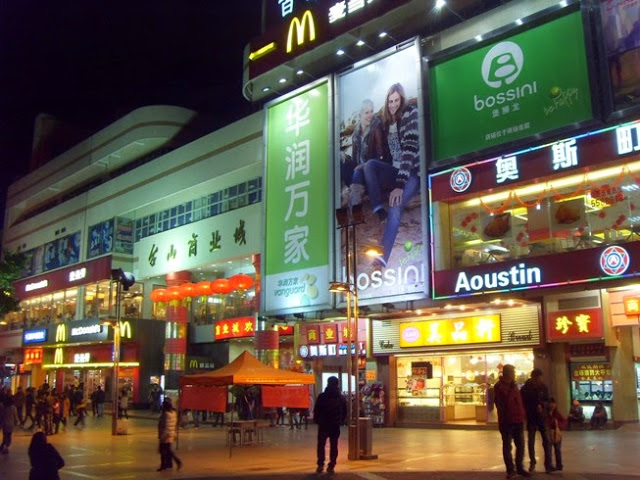One hundred years ago, the Xinning Railroad (新寧鐵路) ran through Taishan and reached Jiangmen. It is one of the earliest railroads ever built in China. Unfortunately the railroad was dismantled ahead of the advancing Japanese army during WWII and never rebuilt.
The old railroad station clock tower, a red-brick structure said to be an imitation of the then Seattle Station, became an icon of the city and served as its central bus station until its controversial dismantle in the 1990's to make room for a new shopping mall.
 |
| An Artist's recreation of the old Taishan Railway Station clock tower |
Last year, ground was broken for a new railroad that would connect Taishan to the fast-growing city of Shenzhen. Taishan will see the return of rail lines again. Perhaps to lighten their burden of guilt and regret of having destroyed a piece of history, the city Planning Bureau wanted to incorporate elements of the old tower into the new Railway Station and issued a public request for pictures, drawings, and other information related to the old station.
I grew up literally under the shadow of the station tower. A branch of the Taicheng River used to run along the bus station with a landing right across from the clock tower. We used to play hide-and-seek around the area at night. There was a park to the south and a small lake behind the station where we caught fish and shrimps for BBQ.
The station was the terminal of the long distance Guangzhou-Taishan bus line. I walked through its spacious hall numerous times when I took the bus home to visit my grandparents.
Unfortunately I could not find a picture of it from my personal album. The clock tower had been such a routine part of my life that I have never given it a second thought.
Here are a few pictures I found from the internet:
Today, a modern shopping mall occupies the original site. The only trace of its past is the statue of Chin Gee Hee (陳宜禧), the driving force behind the old Xinning Railroad. Having made his fortune partly as a railroad entrepreneur in Seattle, he was convinced that a similar development would jumpstart the economy and extract his hometown from poverty. Through it all, the composed Chin watched passively the upheaval of the past hundred years unfold right before his own eyes. I'm wondering what kind of mix-feeling he is having.

 |
| Statue of Chin Gee Hee overlooking the modern shopping mall on the old railroad station site. |



